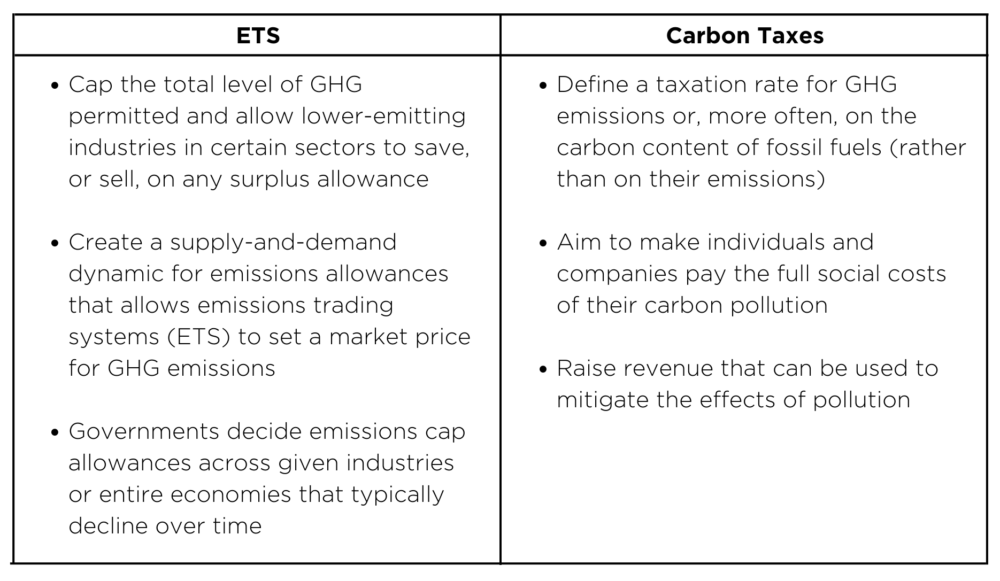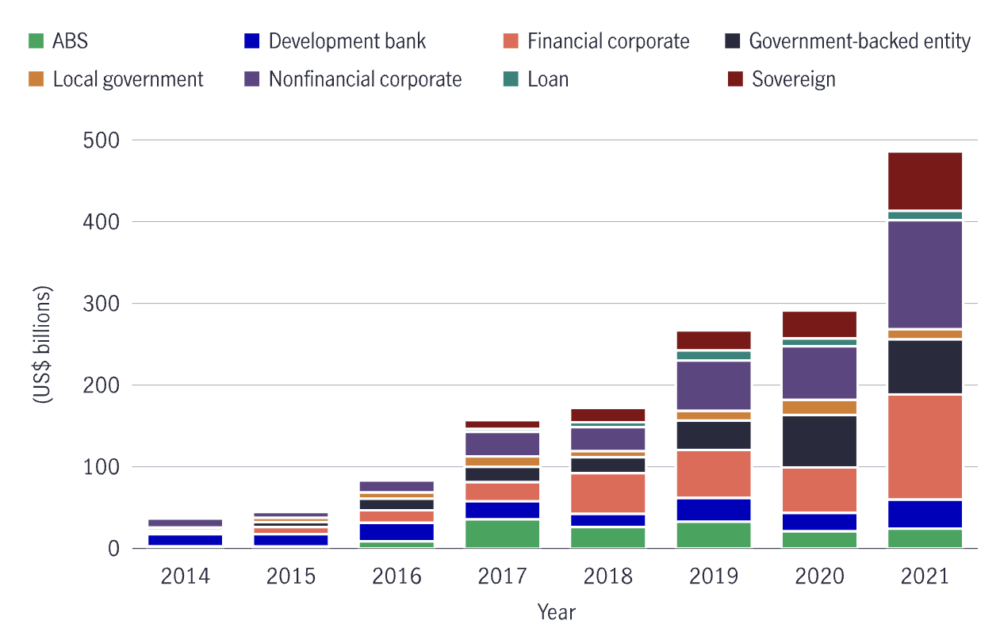It’s widely understood that climate change on the current trajectory would be economically devastating across society. Crucial to achieving consensus on climate change action is a fair and equitable approach to its implementation—a just transition that addresses the risk that the costs of addressing climate change fall disproportionately on those unable to afford it.
Momentum is building among countries and businesses to implement initiatives designed to curb reliance on polluting through carbon pricing. In 2021 alone, 65 carbon pricing initiatives were selected by 45 national jurisdictions and 34 subnational jurisdictions, representing 11.65 GtCO2e, or 21.5% of global greenhouse gas (GHG) emissions. These costs threaten a near-term inflation pickup as businesses essentially pay to pollute or, alternatively, invest in the new technology required to avoid emitting GHG.
Carbon Pricing Approaches

As the International Monetary Fund sharply cuts its growth forecast for 2022, with a warning that higher-than-expected inflation and the Omicron variant have worsened the outlook for the global economy, some politicians have started to attack these green taxes as inflation begins to bite in both developed and developing nations.
Messaging is Key for Just Transition Measures
Taxes on energy disproportionately affect the less wealthy, but it’s crucial to achieving net zero that green taxes continue to incentivize a shift to sources of low emissions energy. In the long term, solving climate change can benefit society broadly and, more particularly, its poorest people, communities, and countries, but it’s vital that the proceeds of green taxes are clearly earmarked to show clear value to society and positive direct benefits in the short term.
The gilets jaunes, or yellow vest, protests in France in 2018, sparked by hikes in gas and diesel taxes, serve to highlight that solutions to climate change that don’t acknowledge the reality of economic inequality are perceived as both unfair and politically impractical. Those advocating for climate action in today’s political climate need to anticipate how opponents will portray their proposals and ensure that they’ll be seen as fair.

Green taxes, regulations, and tariffs are important components of the transition to clean energy, helping to correct market imbalances that can favour unsustainable fossil fuels. But we cannot ignore that the concept of taxation is unpopular in isolation, and it will be vital to clarify exactly what green taxes pay for to enable a discussion around what they’re intended to achieve. As proponents of action on climate change, we have a responsibility to ensure this message is well delivered and, for these programmes to be popular, we need comprehensive messaging about the tangible benefits resulting from the revenues raised.
In a politically charged environment with substantial scrutiny, it’s important to distinguish these near-term taxes—incentives to tackle climate change—from wild claims about the impact on consumers of other transition activities. For example, a recent report by the World Economic Forum identified a relatively low impact on costs in many industries of between 1% and 4%; however, with large numbers regularly cited and carbon taxes being easy to identify, it’s crucial that proponents of action are clear on costs and benefits.
Political support is growing
Forty-six countries have committed to the introduction of national planning to aid a just transition, and 161 investors, representing US$10.2 trillion in assets, have publicly stated their commitment to supporting the Principles for Responsible Investment’s (PRI’s) recommendations for investor action. In June 2021, EU member states approved a €17.5 billion Just Transition Fund targeting support for regions and sectors most affected by the transition to the green economy, which is conditional on member states submitting territorial just transition plans.
ESG-labeled bonds, including sovereign bonds linked to climate action, have seen a significant increase in issuance over the last couple of years. Building on the success of green bonds, social sovereign bonds direct funding towards projects with positive social outcomes, which can include training, education, and employment generation linked to climate change. Investor interest in these bonds has soared during the COVID-19 pandemic, as the market turns to sources of capital that deliver social benefits while funding recovery.
Global climate bond initiatives

Both institutional investors and shareholders can use their influence on global companies to ensure that just transition measures are in place, in consultation with workers, communities, and unions. We must replace employment in polluting industries with new, high-quality jobs. We must incentivise investment and more sustainable practices while penalising pollution. We must set higher standards. Some of these come with short-run costs, and we must ensure we understand who pays and who gains and, in doing so, ensure that we demonstrate that we aim for a just transition.
“Saving our planet, lifting people out of poverty, advancing economic growth … these are one and the same fight.”
—Ban Ki-moon, Eighth Secretary-General of the United Nations

